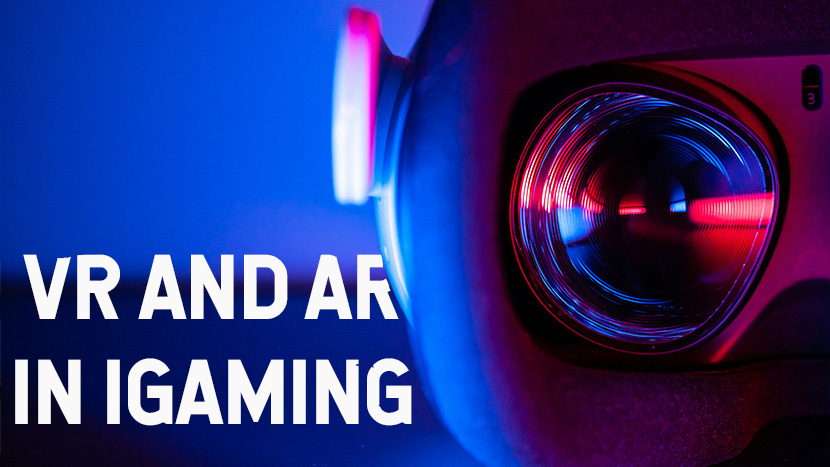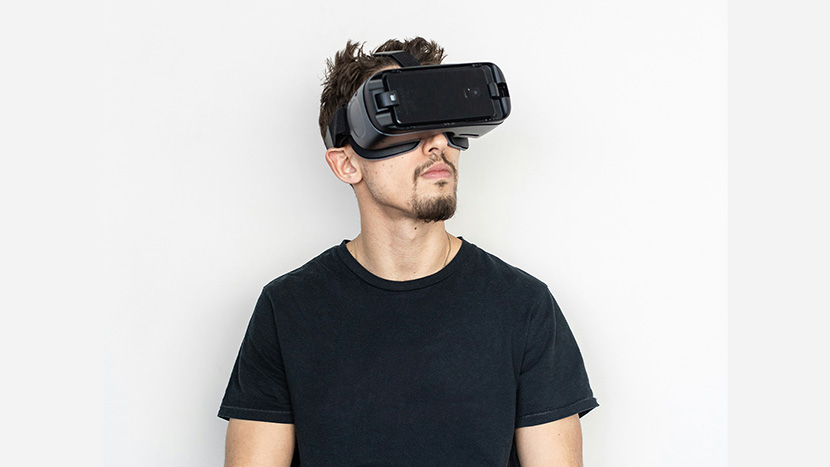VR and AR Tech Are Taking Over, Especially for iGaming!
Virtual Reality (VR) technology immerses users in a simulated environment, allowing them to interact with and explore virtual worlds. On the other hand, Augmented Reality (AR) overlays digital elements onto the real world, enhancing the user’s perception of reality. Both technologies offer exciting opportunities for immersive gaming experiences in all kinds of iGaming, such as casinos, whether accessed from the comfort of one’s home or within the walls of a traditional casino.
In the realm of online gaming, VR and AR have the potential to revolutionize the casino experience by offering lifelike simulations of popular games like poker, blackjack, and slots. For example, instant payout casinos can leverage VR and AR to create dynamic and engaging gaming environments where players can enjoy seamless transactions and immediate rewards. The integration of these technologies enhances player immersion and opens up new possibilities for innovative gameplay features and social interactions.
The Evolution of Virtual Reality Casinos
VR casinos have been a focus of development for several years, as pioneers explore the potential of VR technology to replicate real-life casino experiences. Early adopters have introduced VR-enabled games like poker, roulette, and slot machines, enabling players to immerse themselves in their favorite casino games within a virtual environment.
Despite the initial excitement surrounding VR casinos, widespread adoption has been hindered by technical limitations and accessibility challenges. High-quality VR equipment remains expensive and requires significant processing power, limiting its accessibility to the average consumer. Additionally, concerns about motion sickness and the lack of physical interaction have also dampened enthusiasm for VR gaming experiences.
- VR casinos aim to recreate the excitement of traditional casinos through immersive virtual environments and realistic gameplay simulations, attracting tech enthusiasts and gaming aficionados.
- Early adopters of VR technology in the casino industry have introduced popular games such as poker, roulette, and slot machines, offering players a novel and engaging gaming experience.
- Despite advancements in VR technology, widespread adoption of VR casinos has been limited by factors such as high equipment costs and technical requirements, restricting access for many potential players.
- The potential of VR casinos lies in their ability to offer an immersive and interactive gaming experience, where players can socialize with others and explore virtual environments from the comfort of their homes.
- As VR technology continues to evolve and become more affordable, the future of VR casinos holds promise, with the potential to revolutionize the way people experience and interact with casino games.
Benefits of Virtual Reality Casinos
VR casinos offer a unique advantage by transporting players to virtual gaming environments that closely mimic the atmosphere of a physical casino. With realistic graphics, dynamic sound effects, and interactive gameplay features, VR casinos provide an immersive experience that heightens the overall gaming experience.
Moreover, the immersive nature of VR casinos extends beyond visual and auditory stimuli. Players can interact with virtual objects and other players in real-time, adding an extra layer of engagement and socialization. This level of interactivity creates a sense of presence and immersion that traditional online casinos cannot replicate. As VR technology continues to advance, the potential for creating truly lifelike casino environments becomes increasingly feasible, promising an even more captivating and authentic gaming experience for players.
Benefits and Opportunities of Augmented Reality Gaming
Augmented Reality (AR) gaming experiences present numerous advantages for casinos, offering enhanced customer engagement and personalized interactions. By integrating AR technology into their offerings, casinos can set themselves apart from competitors and tap into new revenue streams.
- AR enhances traditional casino games by overlaying digital elements onto the physical environment, creating immersive and interactive experiences for players.
- Personalized AR experiences cater to individual preferences, offering tailored gameplay options and incentives that enhance player satisfaction and loyalty.
- Casinos can leverage AR to introduce innovative attractions and entertainment options, attracting tech-savvy audiences seeking novel experiences.
- AR technology opens up new revenue streams for casinos through in-game purchases, sponsored content, and premium features that enhance the gaming experience.
- The integration of AR into casino offerings not only drives customer engagement but also positions casinos at the forefront of technological innovation in the gaming industry.
By embracing AR technology, casinos can transform the gaming experience, captivate new audiences, and establish themselves as leaders in the evolving landscape of entertainment.
Overcoming Challenges in Augmented Reality Gaming
While AR gaming presents exciting opportunities, there are notable challenges that must be addressed. These include significant development costs, regulatory hurdles, and safety considerations regarding user experience and privacy. Additionally, ensuring seamless integration with existing casino infrastructure and maintaining a high standard of user experience will be essential for widespread adoption and success.
Moreover, overcoming these challenges will require collaboration between technology developers, regulatory bodies, and industry stakeholders. By working together to address concerns surrounding AR gaming, the casino industry can unlock the full potential of augmented reality to enhance player engagement, drive revenue growth, and shape the future of gaming experiences.
Future Trends and Innovations
Looking ahead, the future of VR casinos and AR gaming experiences is bright, with advancements in technology driving innovation and growth. From more immersive VR environments to AR-powered attractions in traditional casinos, the possibilities are endless. Moreover, integration with other emerging technologies such as blockchain and artificial intelligence could further enhance the gaming experience and open up new opportunities for innovation.
- Virtual Reality (VR) casinos offer immersive gaming experiences with realistic environments and interactive gameplay elements, attracting tech-savvy players seeking unique entertainment options.
- Augmented Reality (AR) enhances traditional casino experiences by overlaying digital elements onto the physical environment, creating interactive attractions and enhancing player engagement.
- Integration with blockchain technology ensures transparent and secure transactions, providing players with peace of mind and fostering trust in online gaming platforms.
- Artificial Intelligence (AI) algorithms analyze player data to personalize gaming experiences, offering tailored recommendations, bonuses, and incentives based on individual preferences and behaviors.
- The convergence of these technologies presents exciting possibilities for the future of casino gaming, where players can enjoy immersive, personalized, and secure experiences both online and offline.
Remember to always gamble responsibly and within your limits!


































































































